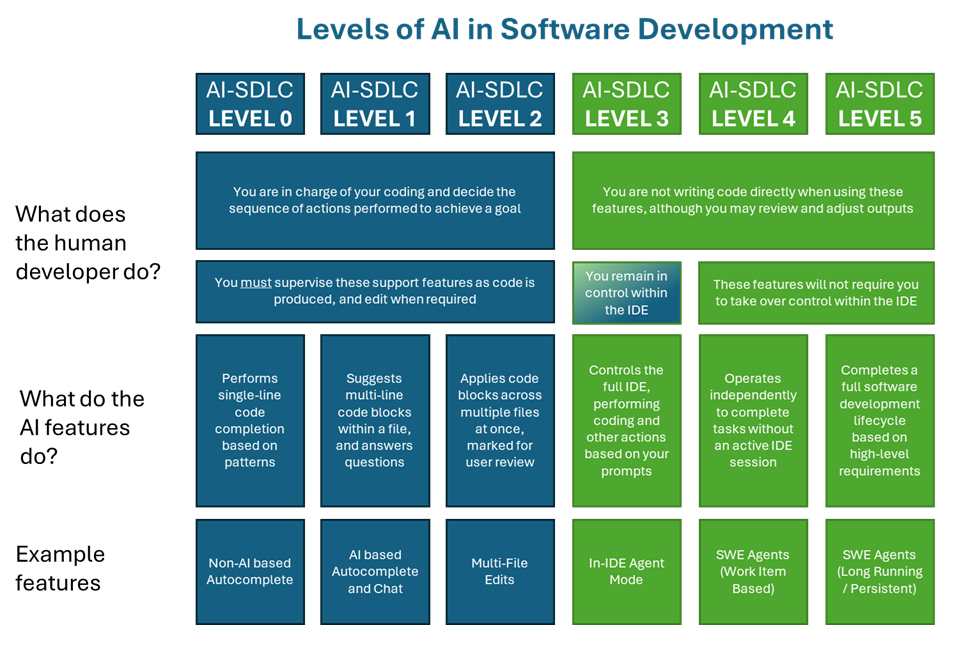Vibe Coding and Autonomous Driving: An Analogy

Comparing vibe coding and agentic development with the 6 levels of autonomous driving
If you’re in my network you may have been flooded with posts about ‘Vibe Coding’ lately, and how it’ll either revolutionize or ruin software development.
New to the topic? My colleague Somnath has a good introduction here.
It’s part of a broader trend around AI Agent based development, a fast-moving field where tools evolve with new features on a weekly basis.
One of the most common questions I receive now is “Does this (vibe/agent coding) actually work in the real world?”
One way I respond is with an analogy: comparing AI in Software Development with Autonomous Driving and the SAE Autonomy Levels.
SAE’s model helped baseline the autonomous vehicle industry over the past 10 years, and it has many parallels with the progression in AI for software development.
Here’s a similar model showing AI in Software Development capabilities mapped into 6 similar levels as SAE uses.
Important note: These are my personal views only, and not any Microsoft/GitHub endorsed classification.

Levels of AI in Software Development
So where are we at right now (in April 2025)?
Over the last 2 years the largest AI-assisted development tool - GitHub Copilot - has evolved from Level 1 into Level 3.
It now offers a range of modes (Ask, Edits, Agent) that represent different levels of autonomy in the IDE, and Copilot Autofix is an early push into Level 4. Autofix is a ‘hands off’ feature that is focused on a very specific task - fixing identified code security vulnerabilities. GitHub is now working on additional Level 4 SWE agents which would operate outside of the IDE, interacting with users as part of work items and pull requests.
Do we need developers still?
Importantly the Level 3 experiences today are still a ‘hands on wheel’ experience.
Just like in-vehicle driver assist systems like Tesla Autopilot require drivers to take over manually in case of unexpected events, it’s vital for developers to be able to take over manual coding if needed. A solid understanding of software development concepts is more important than ever, and it’s possible for AI generated suggestions to outpace a developer’s own experience if not careful.
The good news is that Copilot can be an amazing educational tool to learn new skills; just make sure that code is well reviewed before it makes it into production!
And similar to how we’re seeing robotaxis offering full driverless rides in controlled and well-mapped environments, we’re likely to see more ‘out of IDE’ experiences for developers that may remove them from the main coding loop. But given the complexity of today’s software, it may be some time before those experiences can produce complete enterprise-grade applications. And even then, there will be a need for human developers to prompt, guide, and refine those app experiences.
